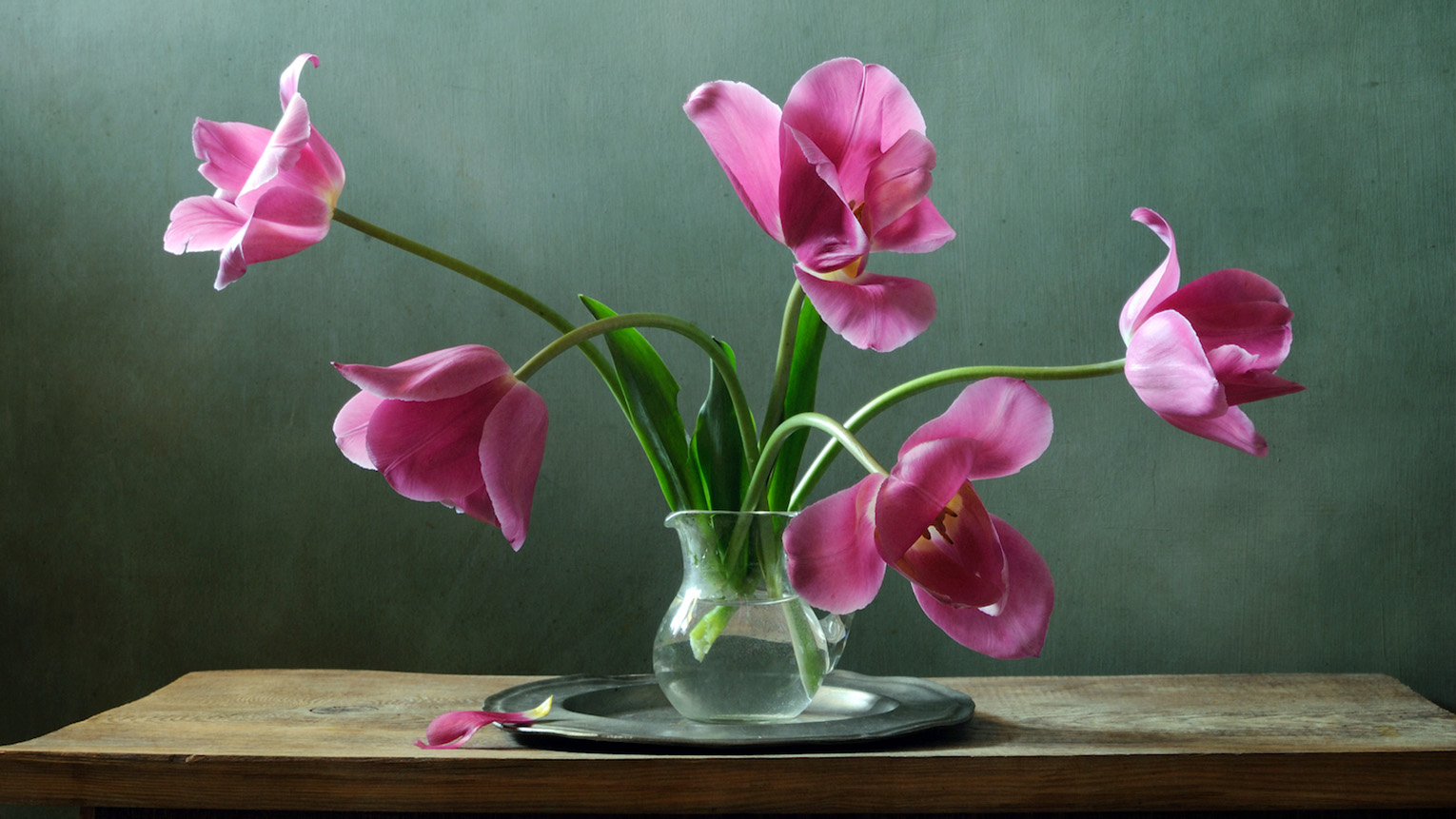What is the best essential oil diffuser?
Natural essential oils have a wide application in different spheres and they are really valuable substances. They are made of highly concentrated extracts from leaves, flowers and other plant parts.
Essential oils have been used in aromatherapy since ancient times because of their powerful effect and numerous health benefits. It’s proven that essential oils offer amazing therapeutic benefits for your physical and mental health.
In the ancient practice of aromatherapy it’s believed that the diffusion of essential oils into the air activates small receptors that are located in the nose. These receptors send messages to the brain which influence the nervous system and the emotions.
It’s not recommended to apply essential oils directly on the skin. They should be first diluted with a carrier oil or a lotion and then used on the skin.
Our main goal is to get the pure form of essential oils and use their natural therapeutic properties to our advantage. To achieve this we should use the right method for aroma diffusion.
Essential oil diffusers are special devices that are designed to spread essential oils into the air and create a scenting effect at a variety of places. These devices can help you use the amazing qualities of essential oils and enjoy your favorite scents whenever you like.
Now we have a variety of essential oil diffusers that use modern technologies for aroma diffusion. They allow us to bring amazing fragrances into home or business buildings in a safe and effective way.
If you are looking for a convenient way to bring pleasant scents into your commercial or residential property, essential oil diffusion systems are the perfect option. There are many benefits to use essential oil diffusers in your home or business property.
Еssential oil diffusers offer you one of the most effective and safest ways to diffuse different aromas into your home or business building. They help you get all of the amazing therapeutic benefits of natural essential oils and use them anywhere.
Since they have evolved through the years, modern essential oil diffusers use advanced technologies for aroma diffusion that offer you amazing results. They offer you the option to personalize them according to your needs and adjust the strength and the duration of the aroma diffusion.
They use a special nanotechnology that allows an uniform and efficient diffusion of essential oils into the air leaving you with an amazing aroma. Еssential oil diffusers use an innovative technology in diffusing different types of aromas in the surrounding area while keeping the properties of the essential oils unaltered. In this way we can get advantage of the natural therapeutic benefits of the essential oils.
There are different types of essential oil diffusers and there are classic and modern methods of aroma diffusion. Each type of essential oil diffuser has its pros and cons.
In this article we will show you these types of essential oil diffusers that use modern methods of aroma delivery. We will give you advice on which aroma delivery technology is best and how to choose the best aroma diffuser for yourself.
Let’s check out the different types of essential oil diffusers and their advantages and disadvantages
Main types of essential oil diffusers
Evaporative /electric fan essential oil diffusers
These essential oil diffusers work with a small electric fan which blows essential oils that have been dripped onto a filter, pad or other surface of similar texture. The air stream makes the essential oils evaporate quickly and they are blown with the air in the surrounding space.
Evaporative essential oil diffusers have a similar aroma diffusion process to this of ceramic and reed diffusers.
As this fan blows air it makes the essential oils to evaporate with a faster speed than they would naturally do. The fan diffuses the essential oils into the surrounding area in an effective and quick way leaving pleasant fragrances in the air.
The only downside of the effect of evaporative diffusers is that the essential oil is dispersed in segments – the lighter portions of the essential oil evaporate and spread into the air more quickly than their heavier portions.
This results in an uneven aroma diffusion process in which the heavier components of the essential oil are released at the end of the aroma diffusion and the lighter components are released at the beginning.
The result is a fractionating of the natural qualities of the essential oils. But thanks to the use of a fan, the essential oils are quickly distributed into the space without depending on the room’s natural air currents.
Evaporative diffusers can sometimes create noise when they are working depending on the device and they tend to be energy-consuming because of the fan.
Another disadvantage of evaporative diffusers is that you may not get all of the therapeutic benefits of essential oils as the essential oils are diffused in stages. Reed diffusers for example fall in the category of evaporative diffusers. They use special capillary action to extract the essential oils out of the aroma solution in an effective way.
Nebulizing essential oil diffusers
Nebulizing essential oil diffusers are one of the most effective diffusers on the market. Their system includes the use of a motor and a bottle or a glass cylinder.
There are different models of nebulizing diffusers and you can choose from either small or large size nebulizing essential oil diffusion systems.
The technology they use offer an efficient, rapid and uniform diffusion of essential oils by creating a vacuum effect. They completely preserve the natural therapeutic properties of the essential oils and because of this they are often more costly in comparison to the other aroma delivery systems.
Nebulizing essential oil diffusers work in a way that doesn’t include dilution in water. However, their price tends to be higher than this of ultrasonic diffusers.
These essential oil diffusers work with a jet of air and need a constant supply of air. The system of nebulizing essential oil diffusers includes a small tube that contains essential oils and a jet nozzle that blows air over the essential oils.
The air stream is highly pressurized and as a result of the high velocity the essential oils are broken into tiny particles. When the essential oil nanoparticles are diffused in the air, they form a fine dry mist.
A vacuum effect is created by the airstream and it extracts the essential oils out of the tube. Afterwards they are diffused into the air in the form of fine mist. This mist doesn’t fall down immediately but it permeates the air instead.
The good thing about the aroma delivery method of nebulizing essential oil diffusers is that the fine mist they create doesn’t change the natural properties of the essential oils.
The chemical composition of the scent isn’t altered during the diffusion of essential oils. The entire essential oil is diffused at once rather than in stages. Nebulizing essential oil diffusers break down essential oils into nanoparticles that are so small and they can be inhaled or used for aromatherapy. One of the downsides of essential oil diffusers is that they can be noisy while working.
Nebulizing diffusers can disperse essential oils without changing any of their natural therapeutic properties. The essential oils are diffused into the air in the form of tiny droplets and they remain unchanged during the aroma diffusion process. For this reason nebulizing essential oil diffusers are considered one of the best technologies for effective aroma diffusion.
Nebulizing essential oil diffusers use advanced nanotechnology that offers an effective diffusion of essential oils that leaves a long-lasting fragrance at a surrounding space.
These essential oil diffusers don’t use any water or heat which can change the therapeutic qualities of each essential oil. And they disperse the entire essential oil into the air. For this reason they offer you optimal benefits in terms of aromatherapy.
Another one of the greatest advantages of nebulizing essential oil diffusers is that they can be personalized according to your personal preferences. There are nebulizing essential oil diffusion systems with different control options.
Some nebulizing essential oil diffusion systems are equipped with control features for adjusting the air flow which allows you to control the aroma distribution in an easy way. They also feature timers to set the exact duration of aroma diffusion throughout the day. In this way you can set your essential oil diffusion system in the way you like to suit the scenting needs of your home or business.
But nebulizing diffusers have their downsides too. They are the most expensive type of essential oil diffusers to buy and maintain. That’s because they use only pure essential oils that aren’t diluted with water or treated with heat and as a result they utilize more essential oil than the other types of essential oils.
Besides their high price, another downside of nebulizing essential oil diffusers is that they can be sometimes difficult for cleaning. Also, their glass containers are expensive to replace in case they get damages.
Moreover, some devices produce high noise levels which makes them unsuitable for some places where a quiet environment is needed.
Ultrasonic essential oil diffusers
Ultrasonic essential oil diffusers work with water infused with essential oils and electronic frequencies that create vibrations. The system of ultrasonic diffusers includes a small disc that is placed under water which is mixed with essential oils.
The disc vibrates in a rapid way and it breaks down the essential oils mixed with water into tiny molecules which are dispersed into the air in the form of fine mist. The essential oils are turned into a mist or humidification.
Ultrasonic diffusers turn liquid into vapor and their method of work doesn’t require the use of heat. This is great when it comes to the preservation of the natural properties of essential oils.
The essential oil is first diluted with water and its effective diffusion depends on the natural currents inside the room. The ultrasonic essential oil diffusers work with rapid vibrations.
Ultrasonic essential oil diffusers are a preferred option for humidifying dry air at indoor spaces during the winter season.
Some ultrasonic essential oil diffusers have an automatic turn-off option. This helps you manage in an easy way how much essential oil is dispersed into the air.
Their design is sturdy and their price is usually lower than this of nebulizing essential oil diffusers. Ultrasonic essential oil diffusers are also an economic choice as they use a small amount of essential oil and don’t use heat to break down the essential oils into microparticles.
Another advantage of ultrasonic diffusers is that they can be used both as diffusers and humidifiers. This makes them a preferred choice for people who live at place in a dry climate.
Ultrasonic diffusers produce little nose or no noise at all which makes these essential oil diffusers suitable for use at night or in a kids room.
The downside of ultrasonic diffusers is that only a small part of the mist they produce is pure essential oil. The dispersion of essential oils depends on the room’s air current.
If your living area has high humidity levels, then it won’t be good to use such types of essential oil diffusers like ultrasonic diffusers to make the air in your property even more humid.
Heat essential oil diffusers
As their name suggests these essential oil diffusers use heat instead of air to disperse essential oils into the air. Some of the most basic types of heat essential oil diffusers is candle diffusion which is still in use. Heat essential oil diffusers are preferred for their noise-free way of work.
There are new types of heat essential oil diffusers such as electric heat diffusers, lamp ring diffusers, which can be set directly on a lamp’s bulb, steam inhalation devices. The essential oil particles are diffused into the air as a result of the bulb’s excess heat.
Just like evaporative diffusers heat diffusers have also one downside-the fractioning of the essential oils which is likely to happen. The heat changes the natural properties of the essential oils.
It’s recommended to get heat essential oil diffusers that use very low temperatures to diffuse the essential oils with a slow speed to minimize the damaging effect on the essential oils. In this way the therapeutic qualities of the essential oil will be well-preserved.
The conclusion:
Ultrasonic and nebulizing diffusers are the best types of essential oil diffusers when it comes to efficient aroma delivery and the production of a long-lasting quality scent.







Leave a Reply